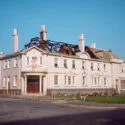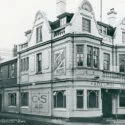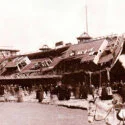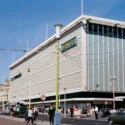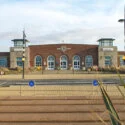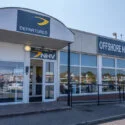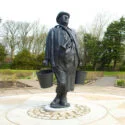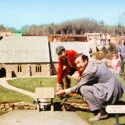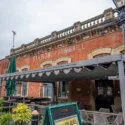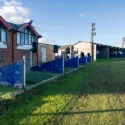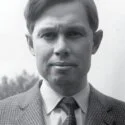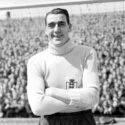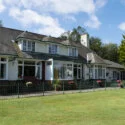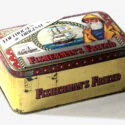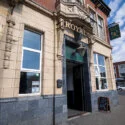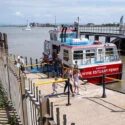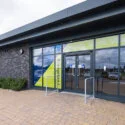Captain Sir John William Alcock KBE DSC (5 November 1892 – 19 December 1919) was a British Royal Navy and later Royal Air Force officer who, with navigator Lieutenant Arthur Whitten Brown, piloted the first non-stop transatlantic flight from St. John’s, Newfoundland to Clifden, Ireland in June 1919. He died in a flying accident in France in December later that same year.
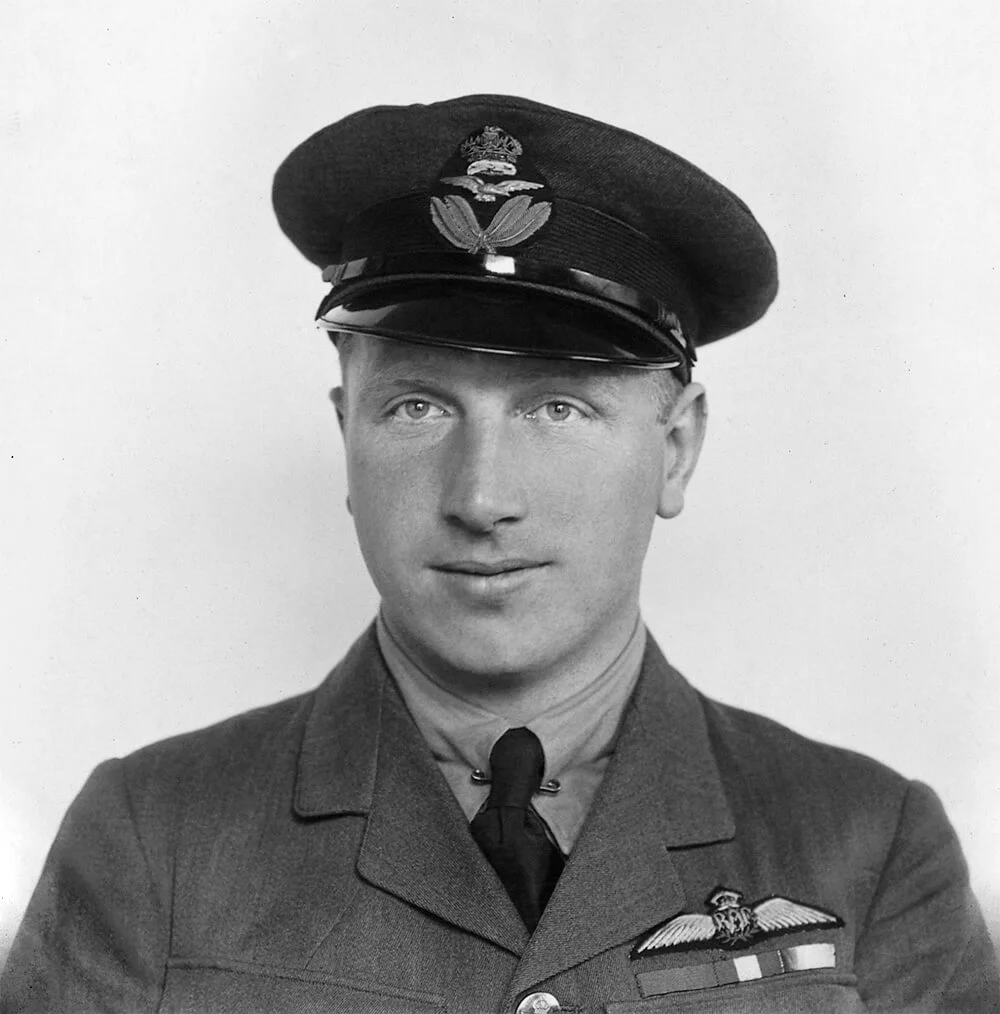
Portrait of Captain Sir John William Alcock. Circa 1919
John Alcock was born on 5 November 1892, perhaps in the coach-house adjoining Basford House on Seymour Grove, Firswood, Manchester, England. His family lived for eight years in Lytham. He attended Heyhouses School in Lytham St. Annes, from 24 April 1900 to 5 April 1905. His father worked for Sir Edward Hulton’s Press. His family moved to 6 Kingswood Road in Ladybarn, Fallowfield. His father died on 14 January 1943. His brother ESJ Alcock, who attended Manchester Grammar School, became the chief flying instructor of BOAC, in the late 1940s, and had learned to fly with his brother, and later lived at Lytham St Annes. Albert, another brother, later lived in Prestwich.
He first became interested in flying at the age of 17. His first job was at the Empress Motor Works in Manchester. In 1910 he became an assistant to Works Manager Charles Fletcher, an early Manchester aviator and Norman Crossland, a motor engineer and founder of Manchester Aero Club. It was during this period that Alcock met the Frenchman Maurice Ducrocq who was both a demonstration pilot and UK sales representative for aero engines made by the Italian Spirito Mario Viale. Ducrocq took Alcock on as a mechanic at the Brooklands aerodrome, Surrey, where he learned to fly at Ducrocq’s flying school, gaining his pilot’s licence there in November 1912. Alcock then joined the Sunbeam Motor Car Company as a racing pilot. By summer 1914 he was proficient enough to compete in a Hendon-Birmingham-Manchester and return air race, flying a Farman biplane. He landed at Trafford Park Aerodrome and flew back to Hendon the same day.
At the beginning of World War I, Alcock joined the Royal Naval Air Service as a warrant-officer instructor at the Royal Naval Flying School at Eastchurch in Kent. It was whilst at Eastchurch that Alcock received his commission as a flight sub-lieutenant in December 1915. In 1916 he was transferred to a squadron operating at Moudros, on the Greek island of Lemnos. While stationed at Moudros he conceived and built the Alcock Scout, a fighter aircraft built out of the remnants of unused and abandoned aircraft. On 30 September 1917, whilst piloting a Sopwith Camel, Alcock attacked three enemy aircraft, forcing two to crash into the sea. For this action he was awarded the Distinguished Service Cross. After returning to base he then piloted a Handley Page bomber on a strategic bombing raid targeting Constantinople. He was forced to turn back to base after an engine failed near Gallipoli. After flying on a single engine for more than 60 miles, that engine also failed and the aircraft ditched in the sea, near Suvla Bay. Alcock and his crew of two were unable to attract nearby British destroyers, and when the plane finally began to sink they swam for an hour to reach the Ottoman Army-held shore. All three were taken prisoner next day by the Turkish forces. Alcock remained a prisoner of war until the Armistice and retired from the Royal Air Force in March 1919.

The British aviators Sir John Alcock and Sir Arthur Whitton Brown who completed the first non-stop transatlantic flight from Newfoundland to Ireland in a Vickers Vimy bomber plane, 1890 miles in just over 16 hours. Shortly after their return they were photographed with their aeroplane on a visit to Vickers Sports. Both men were subsequently knighted. 23 August 1919. © Alamy
First non-stop flight across the Atlantic by Alcock and Brown
After the war Alcock became a test pilot for Vickers and took up the challenge of attempting to be the first to fly directly across the Atlantic. Alcock and Arthur Whitten Brown took off from St John’s, Newfoundland, at 1:45 pm local time on 14 June 1919, and landed in Derrygimla bog near Clifden, Ireland, 16 hours and 12 minutes later on 15 June 1919 after flying 1,980 miles (3,190 km). The flight had been much affected by bad weather, making accurate navigation difficult; the intrepid duo also had to cope with turbulence, instrument failure, and ice on the wings. The flight was made in a modified Vickers Vimy bomber and won a £10,000 prize (£580,500 in 2025) offered by London’s Daily Mail newspaper for the first non-stop flight across the Atlantic.
On 18 December 1919, Alcock was piloting a new Vickers amphibious aircraft, the Vickers Viking, to the first post-war aeronautical exhibition in Paris when he crashed in fog at Cottévrard, near Rouen in Normandy. Alcock suffered a fractured skull and never regained consciousness after being transferred to a hospital in Rouen. He succumbed to his injuries the following day. His grave in Southern Cemetery, Manchester is marked by a large stone memorial.
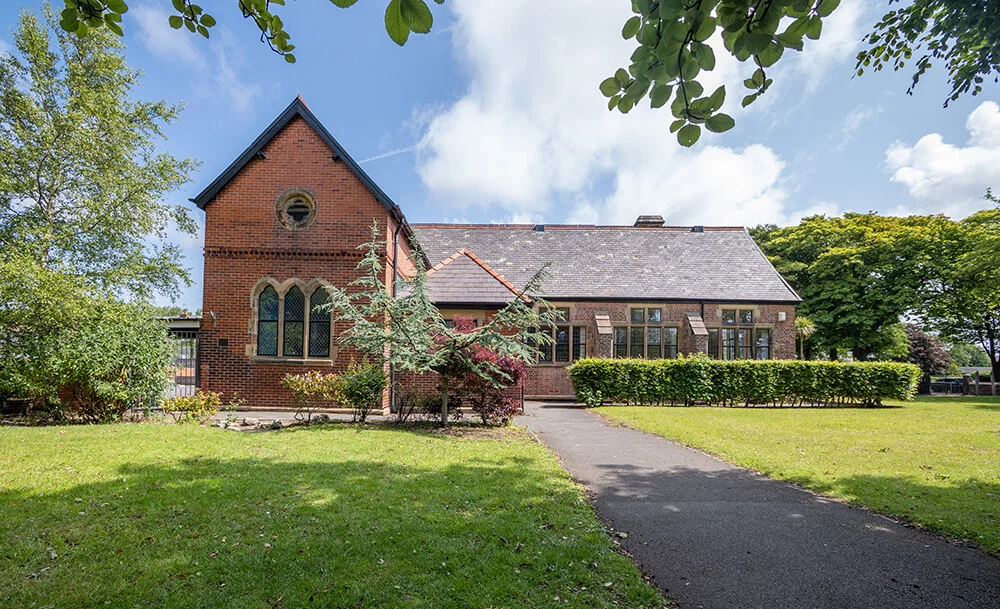
Side view of Heyhouses Endowed Church of England Primary School in 2025
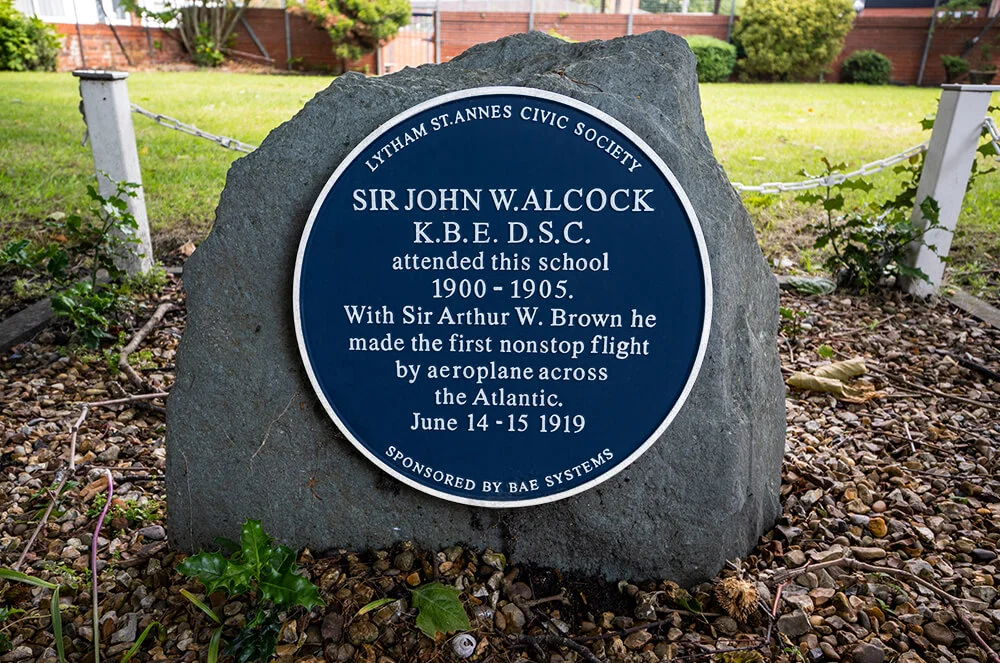
The blue plaque is situated in a small garden at the side of the school.
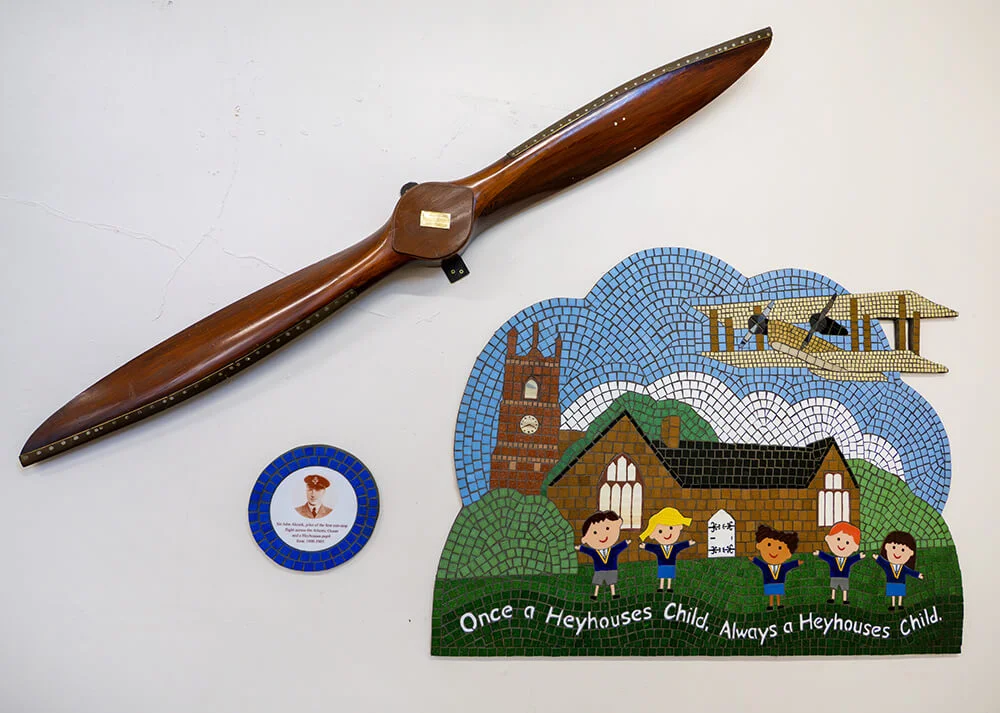
Propeller, plaque and mosaic display inside the school
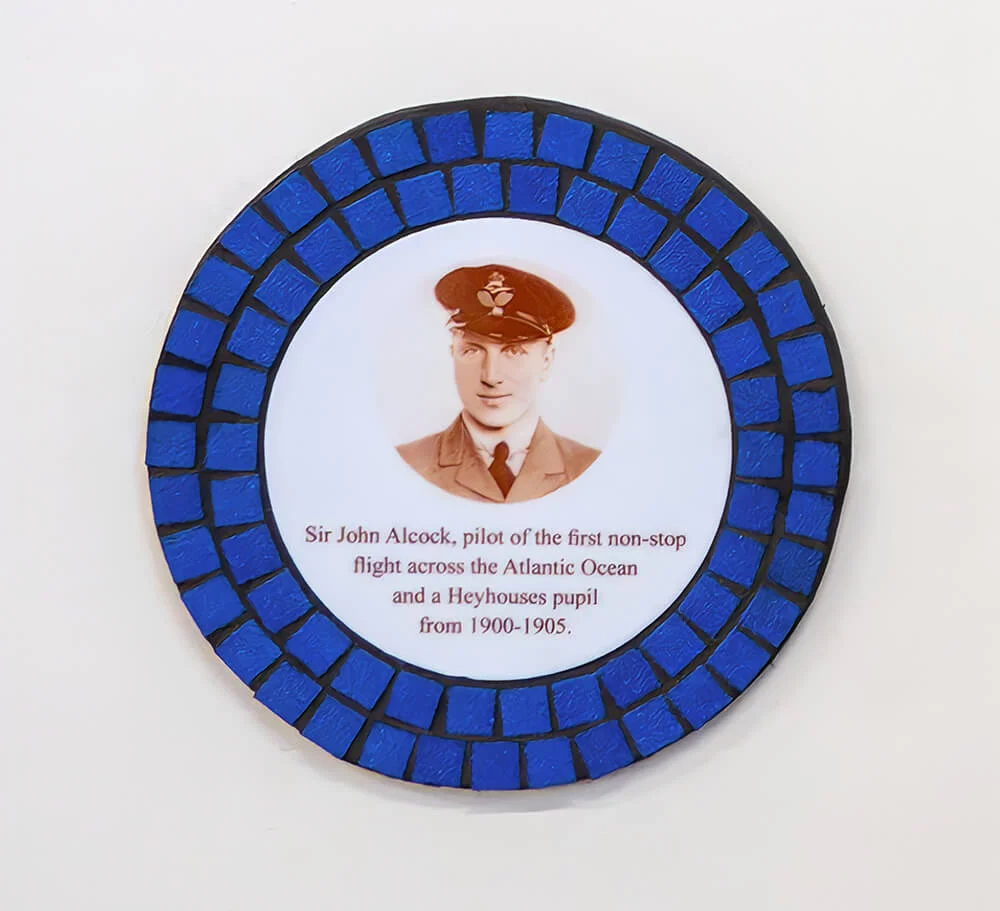
Close-up image of the plaque
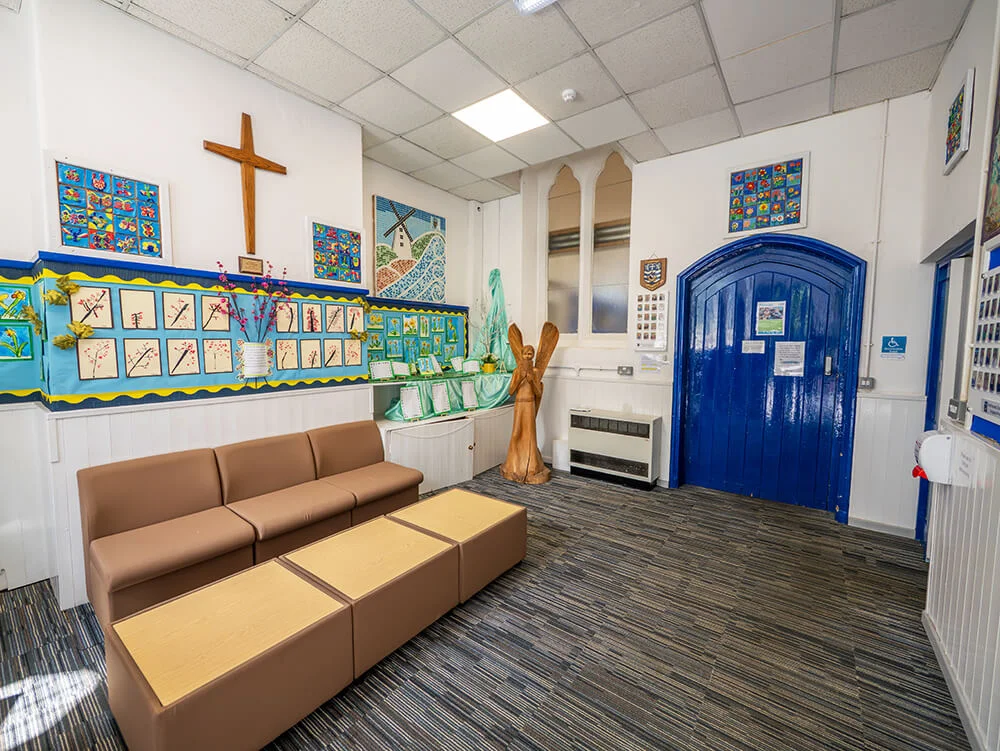
The school’s reception room
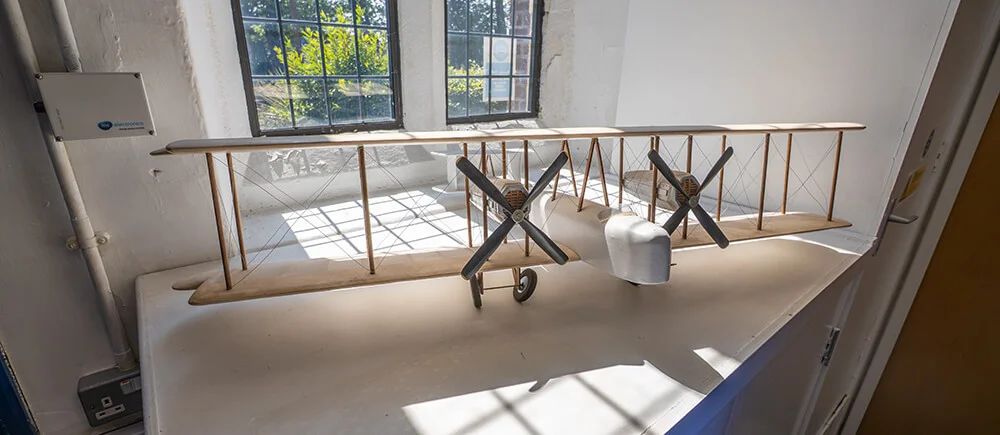

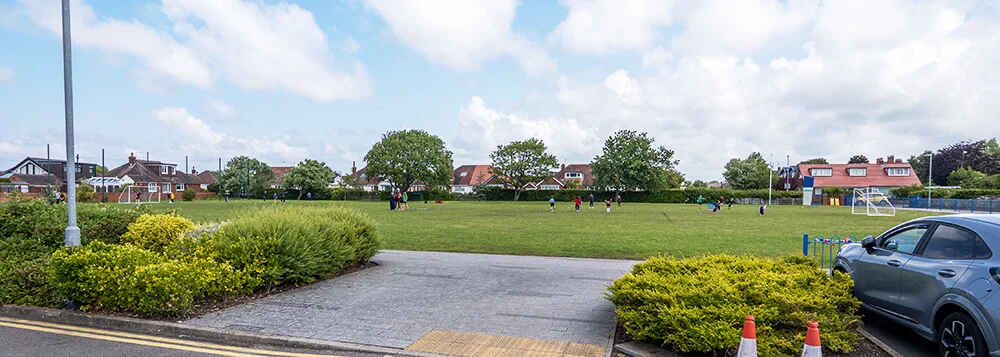
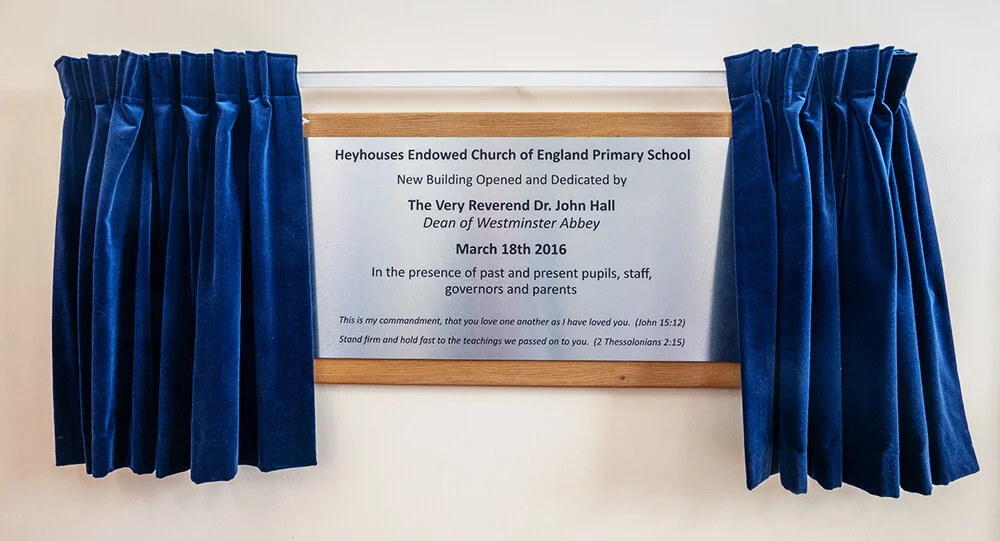
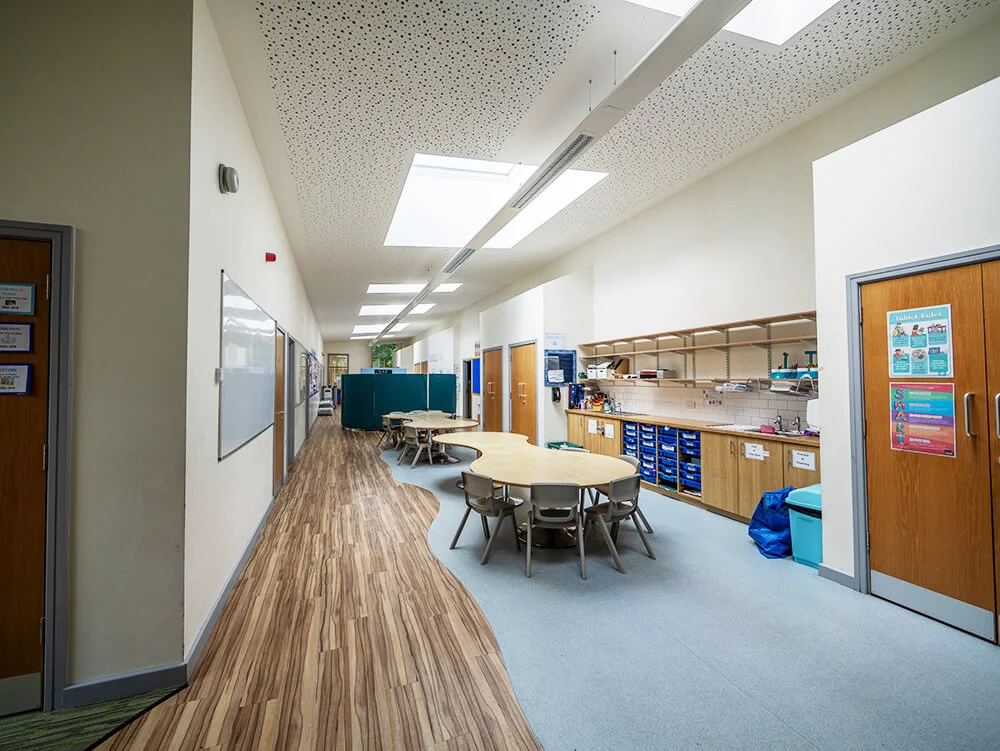

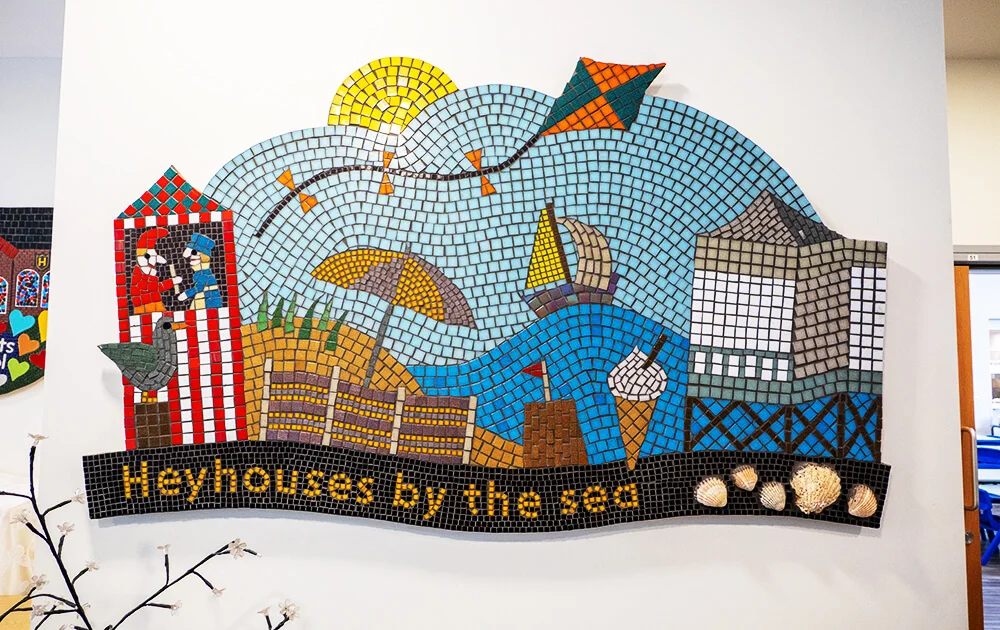

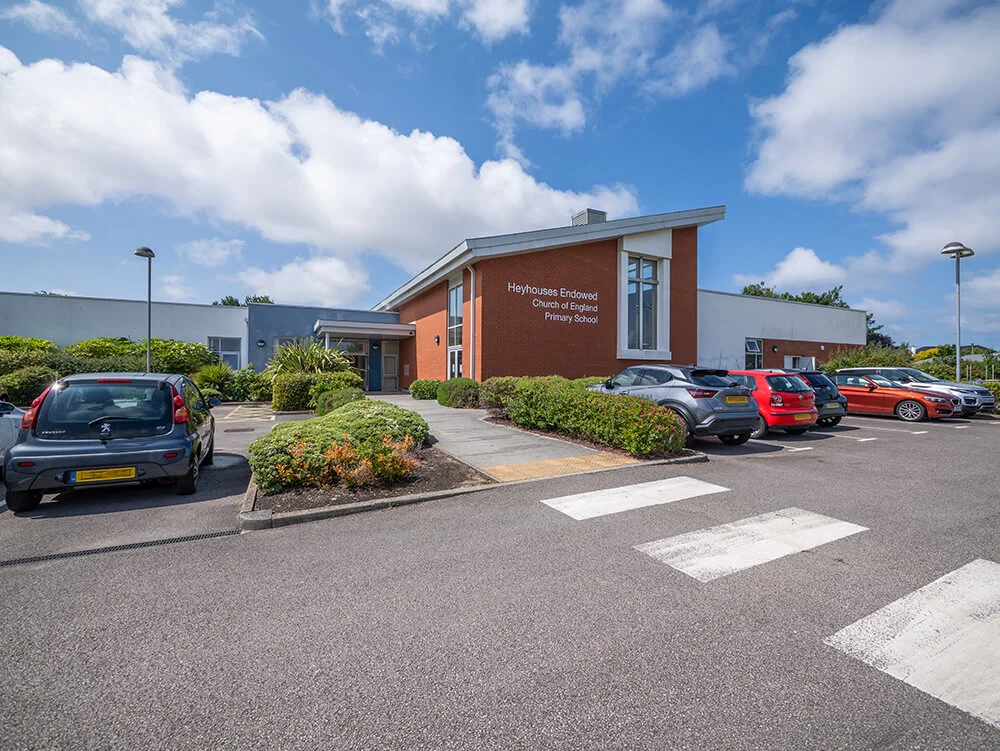
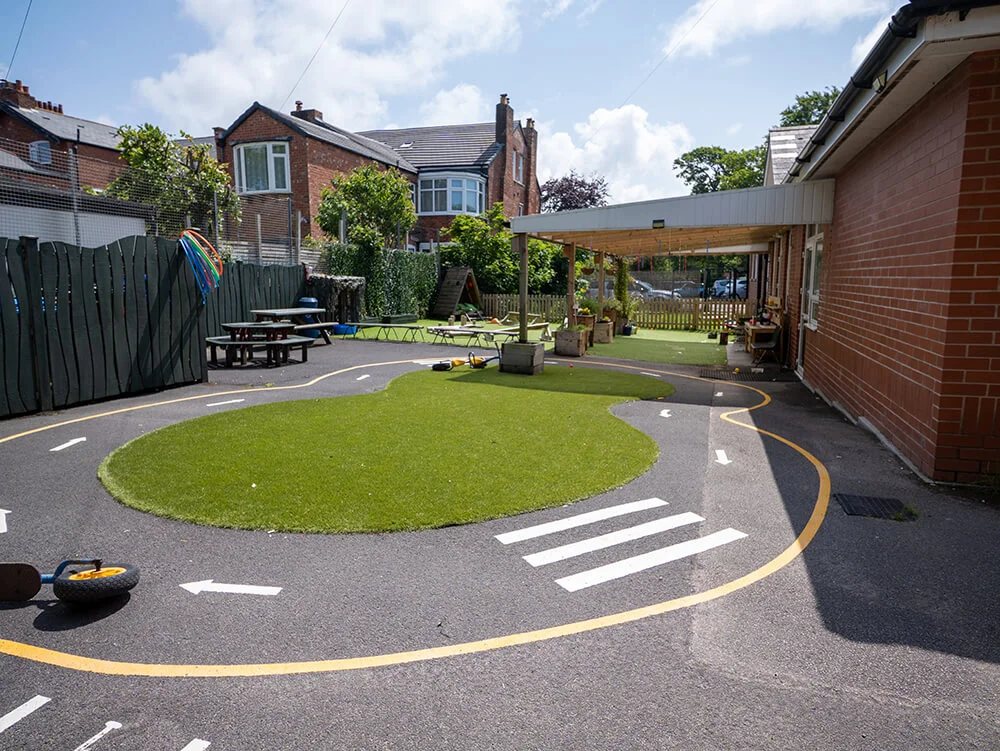

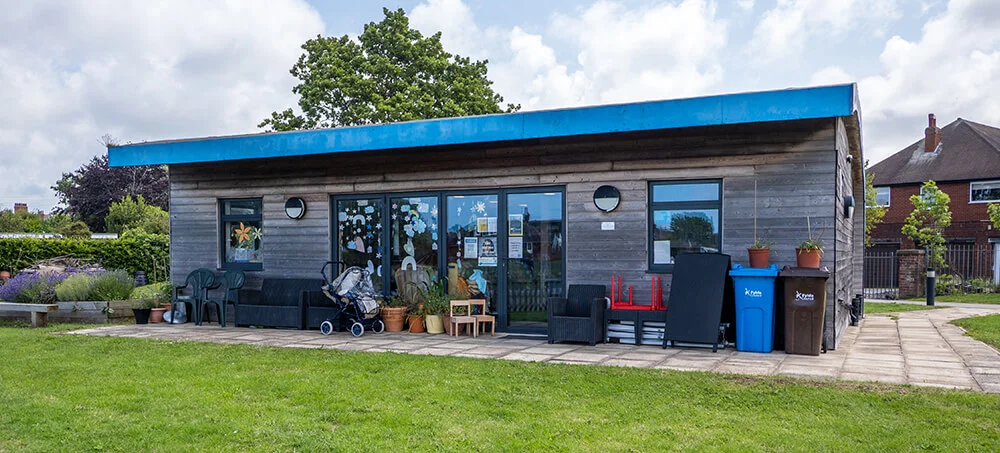
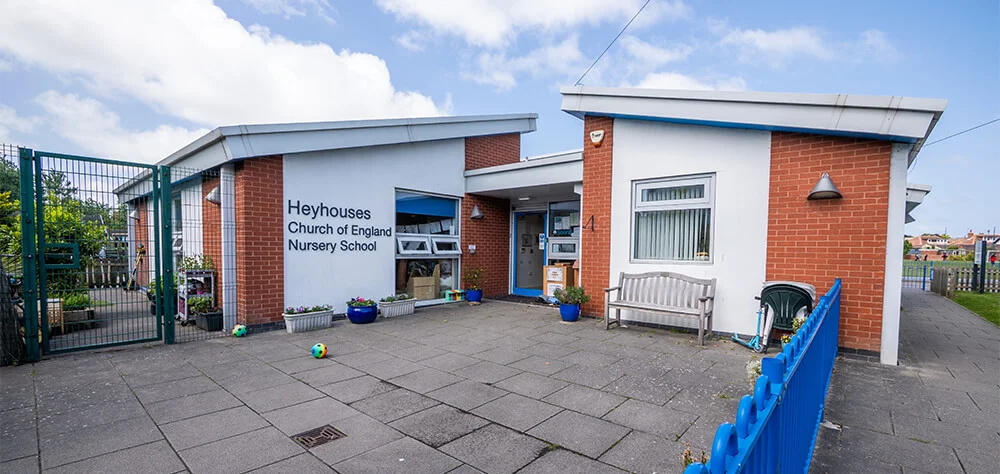
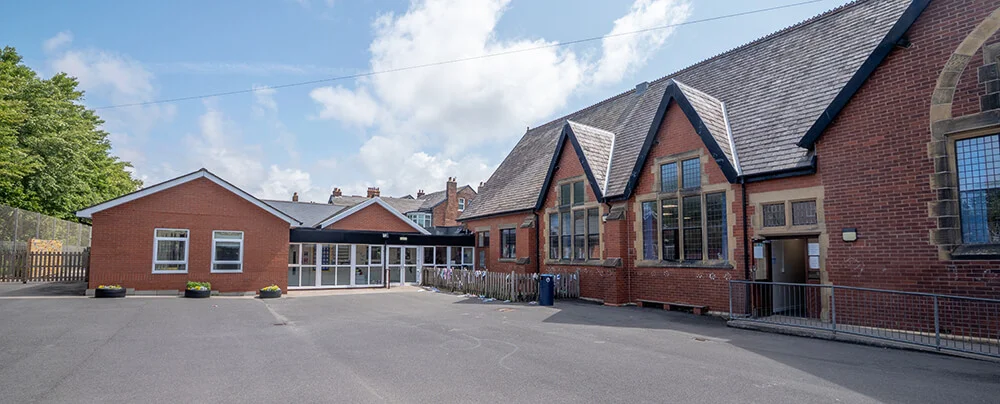
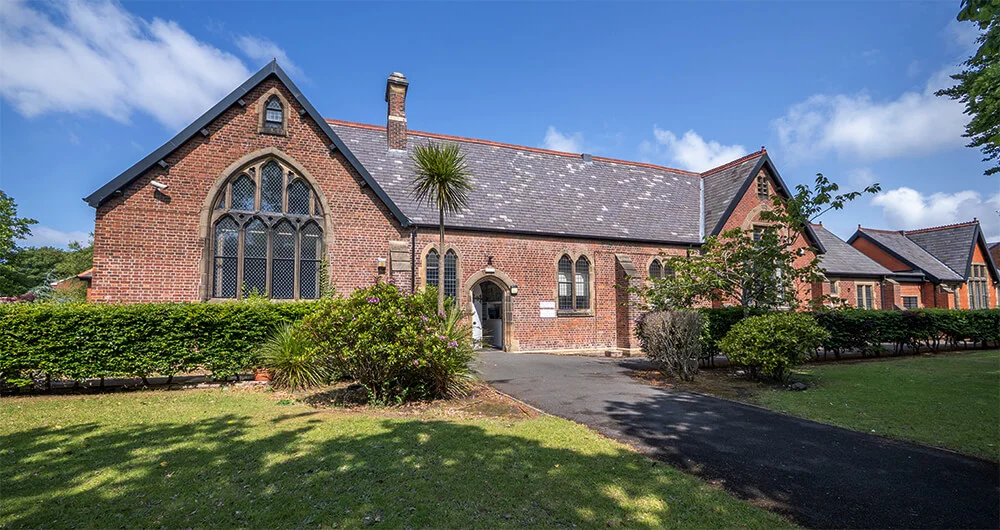
Images by © Deeper Blue Marketing & Design Ltd


